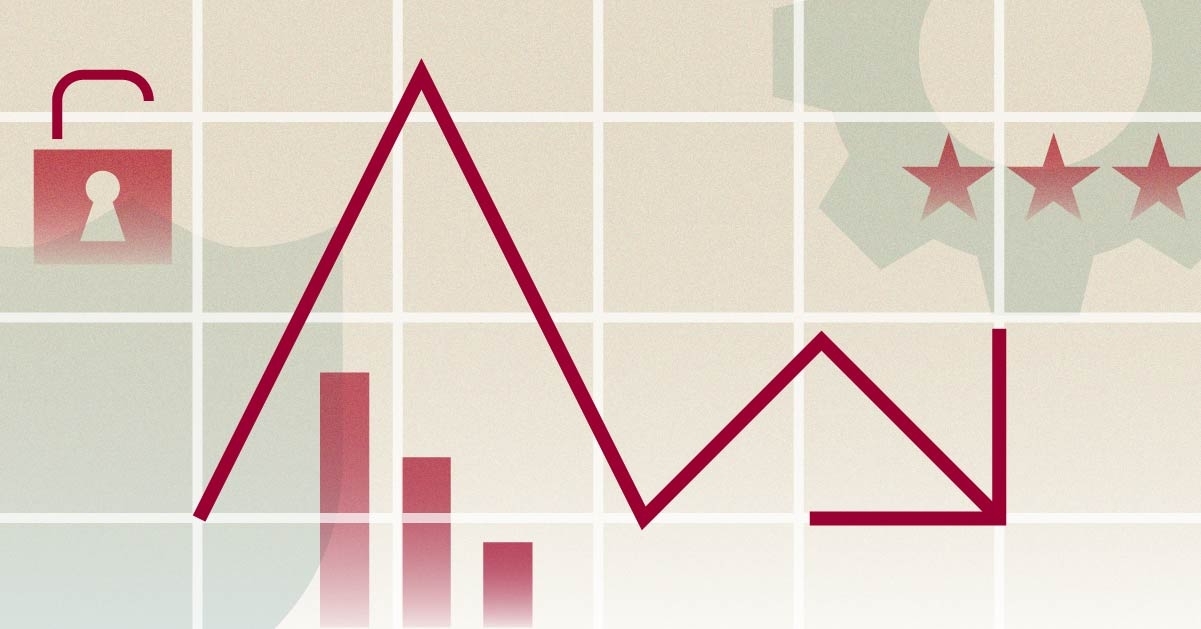If you are getting ready to retire and would like to create a worry-free, low-maintenance portfolio, you might wonder what risks you should be attuned to and how you can troubleshoot them.
Managing risk during retirement has changed a lot during the past few decades. Yesteryear's retirees enjoyed the luxury of much higher interest rates as well as pensions, so they could afford to dramatically ratchet down their portfolios' equity holdings during retirement. Why risk big losses if you didn't need to?
For today's retirees, however, fretting about short-term market movements and hunkering down in low-volatility, low-returning assets is a luxury they can't afford. Instead, they need to keep their eyes on what will be a far bigger threat--the prospect of outliving their money or having to change their in-retirement lifestyles.
With that in mind, here are some of the key risks to pay attention to as you position your portfolio for retirement, as well as how you can inoculate your portfolio against said risks.
The Threat: Longevity
It's odd to call living a good long life a risk. But today's 65-year-olds can expect to live 20 years more, according to the Office of National Statistics, and your own life expectancy may be even longer than that.
Tools for the Job--Given that long portfolio life span, all but the very wealthiest retirees need to wring some more growth out of their portfolios than cash and bonds can afford. Holding stocks is a must, but what's the right amount? According to Brook Sweeney, Investment Consultant with Morningstar Associates Europe, if you have a huge pool of assets and you are very risk intolerant then you can afford to lower your weighting to equities to reduce risk. If, however, you are at the other end of the spectrum and your pension pot is not very large then it would be unwise to have too high a weighting to equities. Somewhere between those two extremes will make sense for most retired people.
In addition to considering a higher equity weighting, pre-retirees and retirees can also consider lifestyle choices to improve their portfolios' staying power. Of course, each of these choices carries its own set of trade-offs, but the options working longer or part-time and decreasing in-retirement spending, particularly after market downturns. Annuities, and especially longevity insurance (namely, fixed deferred annuities), are another option for those with very long life expectancies.
The Threat: Long-Term Care
The annual fee of a UK nursing facility can vary between £21,000 and £30,000, according to a 2010 survey by insurance provider Partnership, and long-term care can be far more costly if nursing is required. Given that the typical nursing-home stay averages 2.5 years, that's close to £75,000 of your portfolio's value right there.
Tools for the Job--Some of the same tools and strategies I outlined above--including holding more in stocks and reducing your withdrawal rate--also make sense if you're worried that paying for long-term care could gobble up a big share of your retirement nest egg. But the purest way to keep long-term care costs from cutting into other life goals, such as leaving money for your heirs, is to purchase a long-term care insurance policy. These policies are pricey, particularly if you buy one with an inflation component and/or if you're over 65, but they can provide invaluable peace of mind, too.
The Threat: Inflation
Inflation looms as a particularly big threat for retired people. Retirees living off of their investments don't receive cost-of-living adjustments (except for possibly their pension income), so inflation can readily translate into declining purchasing power and a reduced standard of living.
Tools for the Job--As I've noted in previous articles, inflation-linked gilts are the most direct way to hedge against an unexpected increase in inflation, providing an adjustment to an investor's principal to keep pace with inflation. Equities are another, indirect way to gird your portfolio against the threat of inflation. They have the potential for higher returns than bonds, and inflation will take a smaller bite, in percentage terms, out of your future purchasing power. Owning companies with a demonstrated history of dividend growth is another way to help offset the effects of inflation on your portfolio.
Finally, you might also consider a small slice of commodities in your portfolio--roughly 5%-6% at the high end. But if you're retired, be sure to pound-cost average into a commodity investment rather than adding it all at once because mistiming a commodities investment can erode any long-term inflation protection benefit you hoped to gain.
This article discusses other mechanisms for protecting the value of your portfolio from inflation erosion.
The Threat: Higher Taxes
Massive government spending and unfunded liabilities could translate into higher taxes across the board.
Tools for the Job--Despite the saying that death and taxes are life's only certainties, investors actually have a lot of free, legal ways to reduce the latter. At Morningstar.co.uk, we have often highlighted the utility of cash and shares ISAs. You can catch up on our week-long special feature on these tax-efficient wrappers or visit our ISA Centre and make sure you are taking full advantage of the tax break you are entitled to.
The Threat: Volatility Turns Into Permanent Capital Impairment
Volatility doesn't equal risk, as I discuss in this article. But volatility intersects with risk if you need to tap a streaky investment when it's at a low ebb, resulting in permanent capital loss.
Tools for the Job--Retirees can mitigate that possibility by making sure they have at least a few years' worth of living expenses in true cash, the so-called bucket approach. Drawing living expenses from the cash bucket enables retirees to tolerate fluctuations in their higher-risk assets, giving the long-term sleeve of the portfolio the opportunity to rebound from market sell-offs. Noted financial planner Harold Evensky was an early proponent of creating a bucket for retirement income, then periodically filling it up.
























